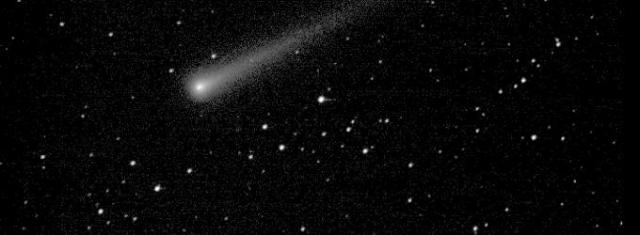Nov 19 2013
Hopes are high for Comet ISON, which has the potential to become the most spectacular comet seen in years. ISON is speeding through the inner solar system at about 120,000 miles per hour, on its way to a close approach to the Sun on November 28th. Assuming it survives its close encounter, it could become easily visible to the unaided eye in dawn skies.

Comet ISON recently brightened and is currently visible with telescopes or binoculars in the constellation Virgo. Today the Harvard-Smithsonian Center for Astrophysics (CfA) is releasing new images of ISON obtained with the MicroObservatory robotic telescope system.
The animated gif combines two separate 60-second exposures of ISON and shows the comet moving against a background of stars. The comet displays a fuzzy round coma and a tail extending to upper right beyond the edge of the frame.
These photos were taken on the morning of Saturday, November 9 by retired teacher Bruce Mellin using MicroObservatory's "Donald" telescope in Arizona. The 650 by 500 pixel images show an area of the sky 0.9 by 0.7 degrees in size. (For comparison, the Full Moon is half a degree across.)
MicroObservatory is a network of automated telescopes, developed by CfA scientists and educators, that can be controlled over the Internet. They were designed to enable students and teachers nationwide to investigate the wonders of the deep sky from their classrooms or after-school centers.
Its five telescopes are named for prominent astronomers through history: Annie Jump Cannon, Benjamin Banneker, Cecilia Payne-Gaposchkin, Donald Menzel, and Edward Pickering.
Students and teachers wanting to use the MicroObservatory telescopes can sign up online at http://mo-www.cfa.harvard.edu/OWN/index.html.
For up-to-the-minute information on viewing Comet ISON, visit the Sky & Telescope guide at http://www.skypub.com/ISON/.
Headquartered in Cambridge, Mass., the Harvard-Smithsonian Center for Astrophysics (CfA) is a joint collaboration between the Smithsonian Astrophysical Observatory and the Harvard College Observatory. CfA scientists, organized into six research divisions, study the origin, evolution and ultimate fate of the universe.